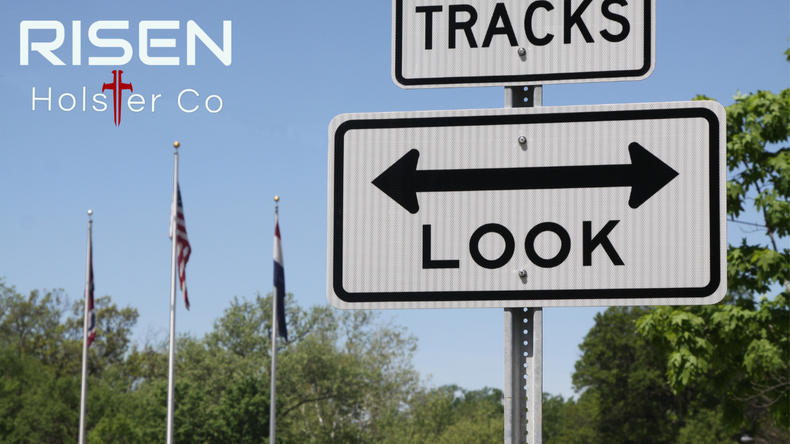Concealed carrying is more than just strapping on a firearm—it’s a mindset and a commitment to preparedness and responsibility. As someone who carries daily, I’ve learned that situational awareness is one of the most critical skills for staying safe in public. Whether you’re navigating a busy shopping mall, sitting in a quiet café, or walking to your car in a dimly lit parking lot, your ability to observe and assess your surroundings can be the difference between staying safe or being caught off guard.
In this blog post, we’ll dive into the core principles of situational awareness for concealed carriers, focusing on mindset, scanning your environment, and maintaining readiness at all times.
1. The Concealed Carry Mindset
Carrying a firearm comes with immense responsibility. It requires a shift in how you view the world and interact with your environment. Adopting the right mindset is the foundation of situational awareness.
- Be Observant, Not Paranoid: It’s essential to strike a balance between being aware and not letting anxiety consume you. Your goal is to live your life normally while maintaining a heightened sense of awareness about potential risks.
- Stay Calm and Confident: Confidence stems from preparation. Regular training with your holster and firearm will give you the peace of mind to carry responsibly without fear.
- Accept Responsibility: As a concealed carrier, your role is defensive. Your firearm is a last resort, and your priority should always be avoiding dangerous situations when possible.
2. Scanning Your Environment
To stay safe in public, you need to develop the habit of scanning your surroundings without appearing overly obvious. Here’s how to hone this skill:
The OODA Loop
The OODA loop—Observe, Orient, Decide, Act—is a decision-making framework often used by military and law enforcement. As a concealed carrier, you can apply it to your daily life:
- Observe: Continuously gather information about your environment. Look for exits, notice the people around you, and identify any potential threats.
- Orient: Interpret what you see. Is someone acting strangely? Is there an area that feels unsafe? Orienting helps you contextualize your observations.
- Decide: Based on what you’ve observed, decide your next steps. This might be moving to a safer location, avoiding a particular person, or simply staying alert.
- Act: Follow through on your decision. Whether it’s leaving the area or taking a defensive position, act with purpose and confidence.
Use the "Heads Up, Phone Down" Rule
Modern technology is one of the biggest distractions. While it’s tempting to scroll through your phone in public, doing so significantly diminishes your awareness. Make it a habit to keep your head up and phone down when moving through or waiting in public spaces.
3. Readiness and Positioning
Situational awareness also means being ready to act if needed. This includes proper holster positioning, clothing choices, and understanding how your gear works with your surroundings.
Holster Accessibility
- Layered Clothing in Cold Weather: In colder months, ensure your holster is accessible even with extra layers. Practice sweeping away jackets or shirts during your draw.
- Everyday Carry (EDC) Bags: If you carry in an EDC bag, practice retrieving your firearm quickly and efficiently without fumbling.
Choosing the Right Position
Your holster position should allow for a clean, efficient draw while minimizing printing. Common positions include:
- Appendix Inside-the-Waistband (AIWB): Ideal for quick access and minimal movement.
- Strong Side Carry (3 o’clock or 4 o’clock): A popular choice for comfort, especially during extended periods of sitting.
- Off-Body Carry: If this is your choice, such as carrying in a purse or bag, prioritize organization and ease of access.
Clothing Considerations
Dress for concealment without sacrificing functionality. Choose patterns or fabrics that minimize printing, and practice clearing your cover garment during your draw.
4. Trust Your Instincts
Your gut feeling is a powerful tool. If something doesn’t feel right, it probably isn’t. Trusting your instincts can help you avoid potentially dangerous situations before they escalate.
- Leave Early: If a situation feels off—whether it’s a crowded area or a person acting suspiciously—don’t hesitate to remove yourself.
- Trust, but Verify: While most people you encounter in public are harmless, staying alert ensures you’re prepared for exceptions.
5. Train for Awareness
Training isn’t just about shooting at the range. It also includes mental exercises to improve your situational awareness:
- Practice Observation Drills: Pick a public space, such as a park or coffee shop, and take note of exits, potential cover, and people’s behaviors.
- Simulate Scenarios: Visualize what you would do in different situations, such as a robbery or altercation, and practice mental rehearsals.
- Team Up: If you’re out with family or friends, discuss plans for emergencies, such as where to meet or what to do if separated.
Final Thoughts
As a concealed carrier, situational awareness is your first line of defense. By adopting the right mindset, consistently scanning your environment, and staying prepared, you can minimize risks and carry with confidence. Remember, your firearm is only one part of the equation—your awareness and readiness are just as critical to staying safe in public.
By practicing these skills and committing to continuous improvement, you’ll not only be better prepared for potential threats but also uphold the responsibility that comes with concealed carry. Stay alert, stay safe, and carry responsibly.

